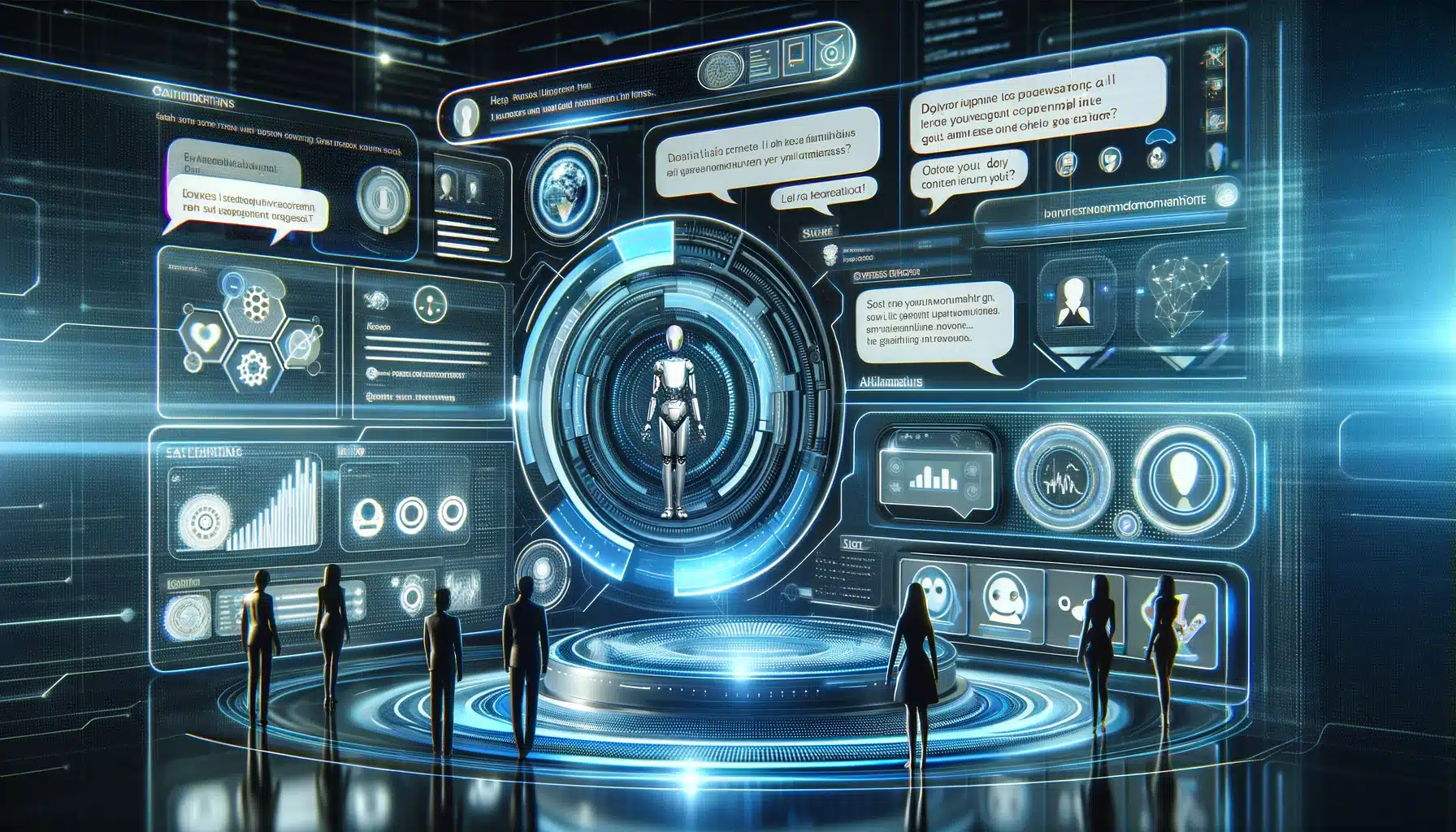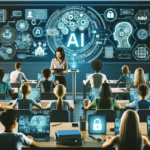Introduction: The Dawn of a New Era in Customer Service
In today’s fast-paced digital world, customer expectations are higher than ever. Consumers demand instant, personalized support around the clock, and businesses are turning to artificial intelligence (AI) to meet these demands. Enter AI-powered customer service chatbots – the revolutionary technology that’s reshaping the landscape of customer interactions. This comprehensive guide will explore the world of AI chatbots, their impact on customer service, and how they’re evolving to provide increasingly sophisticated and personalized support.
Understanding AI-powered Customer Service Chatbots: The Basics
Defining AI Chatbots in Customer Service
AI-powered customer service chatbots are computer programs that use artificial intelligence and natural language processing (NLP) to interact with customers in a human-like manner. These advanced systems go beyond simple rule-based chatbots, capable of understanding context, learning from interactions, and providing personalized responses.
Key Components of AI Chatbots
- Natural Language Processing (NLP)
- Machine Learning (ML) algorithms
- Intent recognition
- Entity extraction
- Dialogue management
- Knowledge bases
- Integration with backend systems
How AI Chatbots Work
AI chatbots process user input through several stages:
- Text Analysis: The chatbot breaks down the user’s message into analyzable components.
- Intent Recognition: It identifies the user’s primary goal or request.
- Entity Extraction: The system picks out specific pieces of information from the message.
- Dialogue Management: The chatbot determines the appropriate response based on the conversation context.
- Response Generation: It formulates a relevant and coherent reply.
- Continuous Learning: The system learns from each interaction to improve future responses.
The Evolution of Customer Service: From Human Agents to AI Chatbots
Traditional Customer Service Approaches
Historically, customer service relied heavily on human agents handling phone calls, emails, and in-person interactions. While effective, this approach had limitations in terms of scalability, consistency, and availability.
The Rise of Rule-based Chatbots
The first generation of chatbots were rule-based systems that followed pre-programmed scripts. While an improvement over no automated support, these bots were limited in their ability to handle complex queries or understand context.
The AI Revolution in Customer Service
The integration of AI has transformed chatbots from simple script-followers to intelligent, context-aware assistants capable of handling a wide range of customer interactions with a high degree of personalization.
Comparison Table: Traditional vs. AI-Powered Customer Service

How AI Enhances Customer Service Capabilities
24/7 Availability
AI chatbots provide round-the-clock support, ensuring customers can get help whenever they need it, regardless of time zones or holidays.
Instant Response Times
Chatbots can handle multiple queries simultaneously, dramatically reducing wait times and improving customer satisfaction.
Personalized Interactions
By leveraging customer data and machine learning, AI chatbots can offer tailored recommendations and solutions based on individual customer profiles and past interactions.
Multilingual Support
Advanced AI chatbots can communicate in multiple languages, breaking down language barriers and providing support to a global customer base.
Consistent Service Quality
Unlike human agents who may have varying levels of knowledge or be affected by mood, AI chatbots provide consistent quality in every interaction.
Scalability
AI chatbots can handle an virtually unlimited number of simultaneous conversations, easily scaling to meet demand during peak periods.
Data Collection and Analysis
Every interaction with an AI chatbot generates valuable data that can be analyzed to improve products, services, and the overall customer experience.
AI Technologies Driving Chatbot Innovation
Natural Language Processing (NLP)
NLP enables chatbots to understand and generate human-like text, allowing for more natural and context-aware conversations.
Machine Learning for Continuous Improvement
Machine learning algorithms allow chatbots to learn from each interaction, continuously improving their responses and understanding of customer needs.
Sentiment Analysis
AI chatbots can analyze the emotional tone of customer messages, allowing them to respond appropriately and escalate to human agents when necessary.
Speech Recognition and Text-to-Speech
Advanced chatbots can integrate speech recognition for voice-based interactions and text-to-speech for audio responses, enhancing accessibility.
Computer Vision
Some chatbots incorporate computer vision capabilities, allowing them to analyze images or documents shared by customers during interactions.
Industries Benefiting from AI-Powered Customer Service Chatbots
E-commerce and Retail: Enhancing the Shopping Experience
In the retail sector, AI chatbots assist with product recommendations, order tracking, returns processing, and answering frequently asked questions about products or services.
Banking and Financial Services: 24/7 Financial Assistance
Banks and financial institutions use AI chatbots to provide account information, assist with transactions, offer financial advice, and even detect potential fraud.
Healthcare: Improving Patient Support
In healthcare, AI chatbots help with appointment scheduling, medication reminders, symptom checking, and providing general health information.
Travel and Hospitality: Streamlining Bookings and Support
Airlines, hotels, and travel agencies leverage chatbots for booking assistance, itinerary management, and providing real-time travel information.
Telecommunications: Technical Support and Service Management
Telecom companies use AI chatbots to troubleshoot technical issues, manage service requests, and provide information on plans and billing.
The Benefits of Implementing AI Chatbots in Customer Service
Cost Reduction
By automating a significant portion of customer interactions, businesses can reduce the need for large customer service teams, leading to substantial cost savings.
Improved Customer Satisfaction
With instant responses and 24/7 availability, AI chatbots can significantly enhance customer satisfaction and loyalty.
Increased Efficiency
Chatbots can handle multiple inquiries simultaneously, dramatically increasing the efficiency of customer support operations.
Data-Driven Insights
Every interaction with an AI chatbot generates valuable data that can be analyzed to improve products, services, and overall customer experience.
Freeing Human Agents for Complex Tasks
By handling routine queries, chatbots allow human agents to focus on more complex issues that require empathy and advanced problem-solving skills.
Reduced Error Rates
AI chatbots, when properly trained, can provide more consistent and accurate information compared to human agents who may make mistakes due to fatigue or lack of knowledge.
Challenges and Considerations in AI Chatbot Implementation
Balancing Automation and Human Touch
Finding the right balance between chatbot automation and human intervention is crucial for maintaining a positive customer experience.
Ensuring Data Privacy and Security
As chatbots handle sensitive customer information, robust security measures must be in place to protect data and maintain customer trust.
Managing Customer Expectations
It’s important to clearly communicate the capabilities and limitations of AI chatbots to avoid frustrating customers with unrealistic expectations.
Continuous Training and Maintenance
AI chatbots require ongoing training and updates to stay current with new products, services, and customer needs.
Language and Cultural Nuances
Developing chatbots that can effectively handle various languages and cultural contexts presents a significant challenge.
Integration with Existing Systems
Seamlessly integrating AI chatbots with existing customer service infrastructure and backend systems can be complex and time-consuming.
The Future of AI in Customer Service Chatbots
Emotional Intelligence in Chatbots
Future AI chatbots may incorporate advanced emotional intelligence, allowing them to respond more empathetically to customer emotions.
Predictive Customer Service
AI chatbots may evolve to predict customer needs and proactively offer support before issues arise.
Augmented Reality Integration
Chatbots could leverage AR technology to provide visual guidance for product use or troubleshooting.
Voice-First Interactions
As voice technology advances, we may see a shift towards voice-based AI assistants becoming the primary mode of customer interaction.
Seamless Omnichannel Experience
Future chatbots will likely offer a more seamless experience across multiple channels, including social media, messaging apps, and voice assistants.
Case Studies: AI Chatbot Success Stories
E-commerce Giant Boosts Sales with AI Chatbot
A major online retailer implemented an AI chatbot that provided personalized product recommendations, resulting in a 25% increase in average order value and improved customer satisfaction scores.
Bank Reduces Call Center Volume with Intelligent Virtual Assistant
A large financial institution deployed an AI-powered virtual assistant that handled 70% of routine customer queries, reducing call center volume and wait times while improving overall customer experience.
Airline Improves Customer Service Efficiency
A international airline introduced an AI chatbot for booking assistance and flight information, leading to a 50% reduction in customer service response times and significant cost savings.
Q&A: Common Questions About AI Chatbots in Customer Service
Can AI chatbots completely replace human customer service agents?
While AI chatbots can handle many routine tasks, human agents remain essential for complex issues, emotional support, and situations requiring empathy or creative problem-solving.
How do AI chatbots learn and improve over time?
AI chatbots use machine learning algorithms to analyze past interactions, customer feedback, and new data to continuously improve their responses and understanding.
Are AI chatbots secure for handling sensitive customer information?
When properly implemented with robust security measures, AI chatbots can securely handle sensitive information. However, it’s crucial for businesses to prioritize data protection and comply with relevant regulations.
How can businesses measure the success of their AI chatbot implementation?
Key metrics include customer satisfaction scores, resolution rates, response times, cost savings, and the percentage of queries successfully handled by the chatbot without human intervention.
What are the limitations of current AI chatbot technology?
Current limitations include difficulty understanding complex context, handling highly nuanced or emotional situations, and the potential for biased responses based on training data.
Conclusion: Embracing the AI-Powered Future of Customer Service
As we look to the future, it’s clear that AI-powered customer service chatbots will play an increasingly central role in how businesses interact with their customers. The ability to provide instant, personalized, and scalable support 24/7 is no longer a luxury – it’s becoming a necessity in our fast-paced digital world.
While challenges remain in perfecting this technology, the benefits of AI chatbots in terms of improved customer satisfaction, operational efficiency, and cost savings are undeniable. As AI continues to evolve, we can expect even more sophisticated and human-like interactions, blurring the line between automated and human support.
For businesses looking to stay competitive and meet the ever-increasing expectations of their customers, embracing AI-powered chatbot technology is not just an option – it’s a strategic imperative. The future of customer service is here, and it’s powered by AI. Are you ready to revolutionize your customer service with AI-powered chatbots? The time to act is now – your customers are waiting, and AI is ready to serve.


